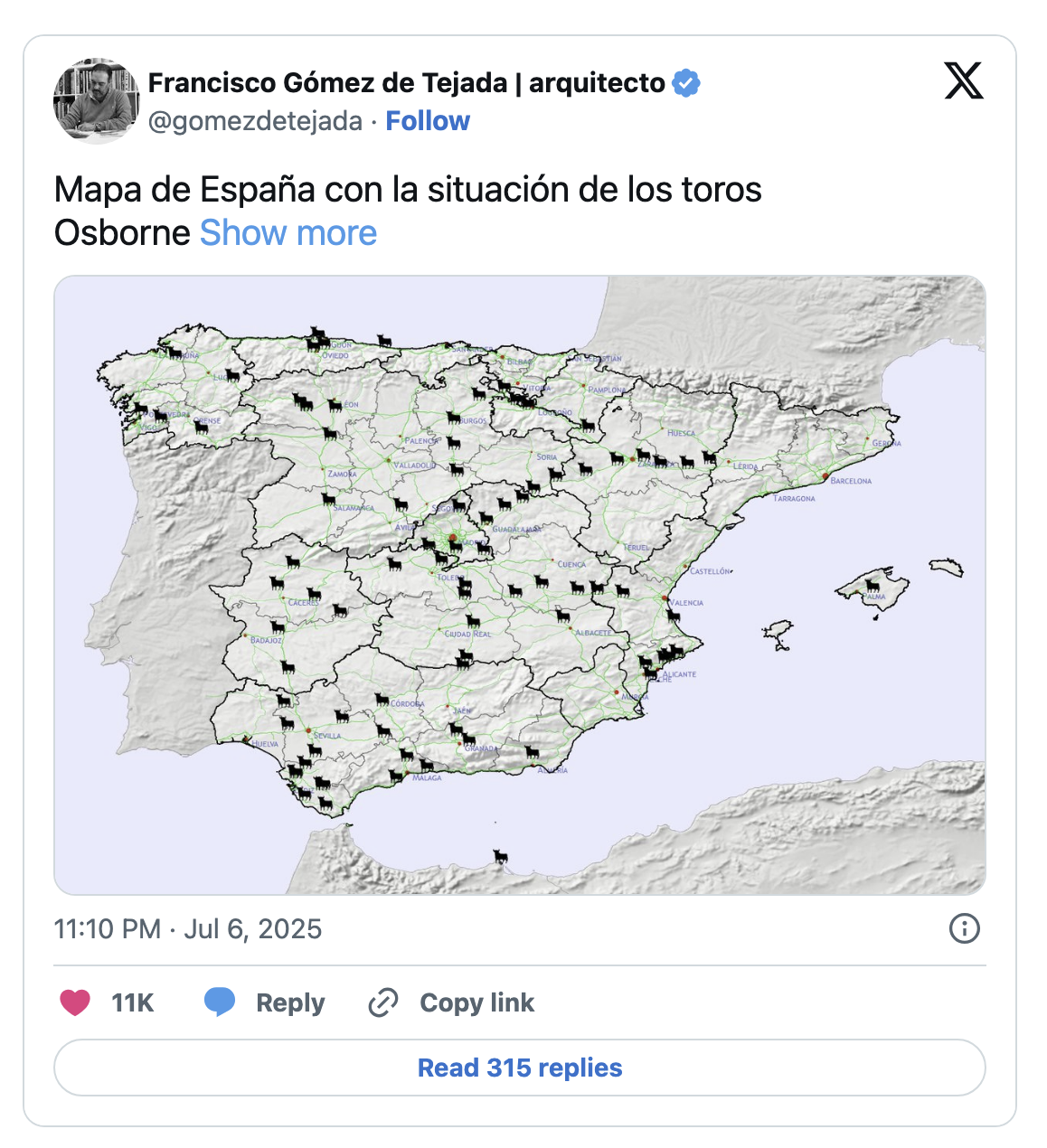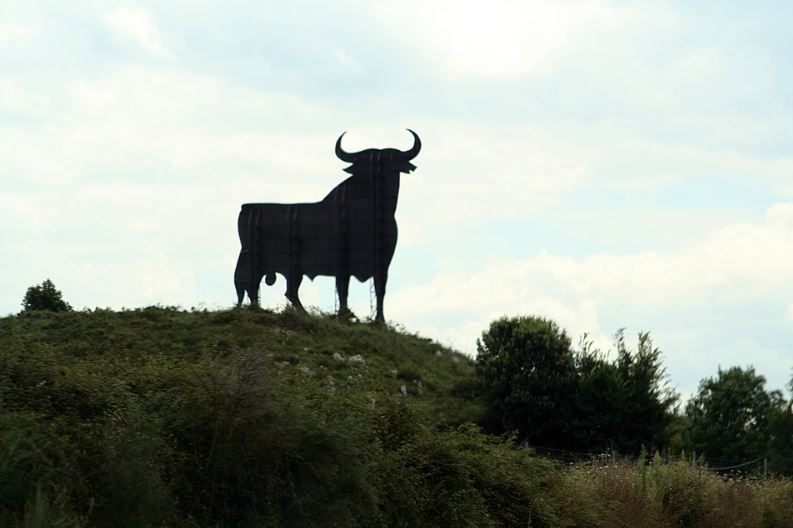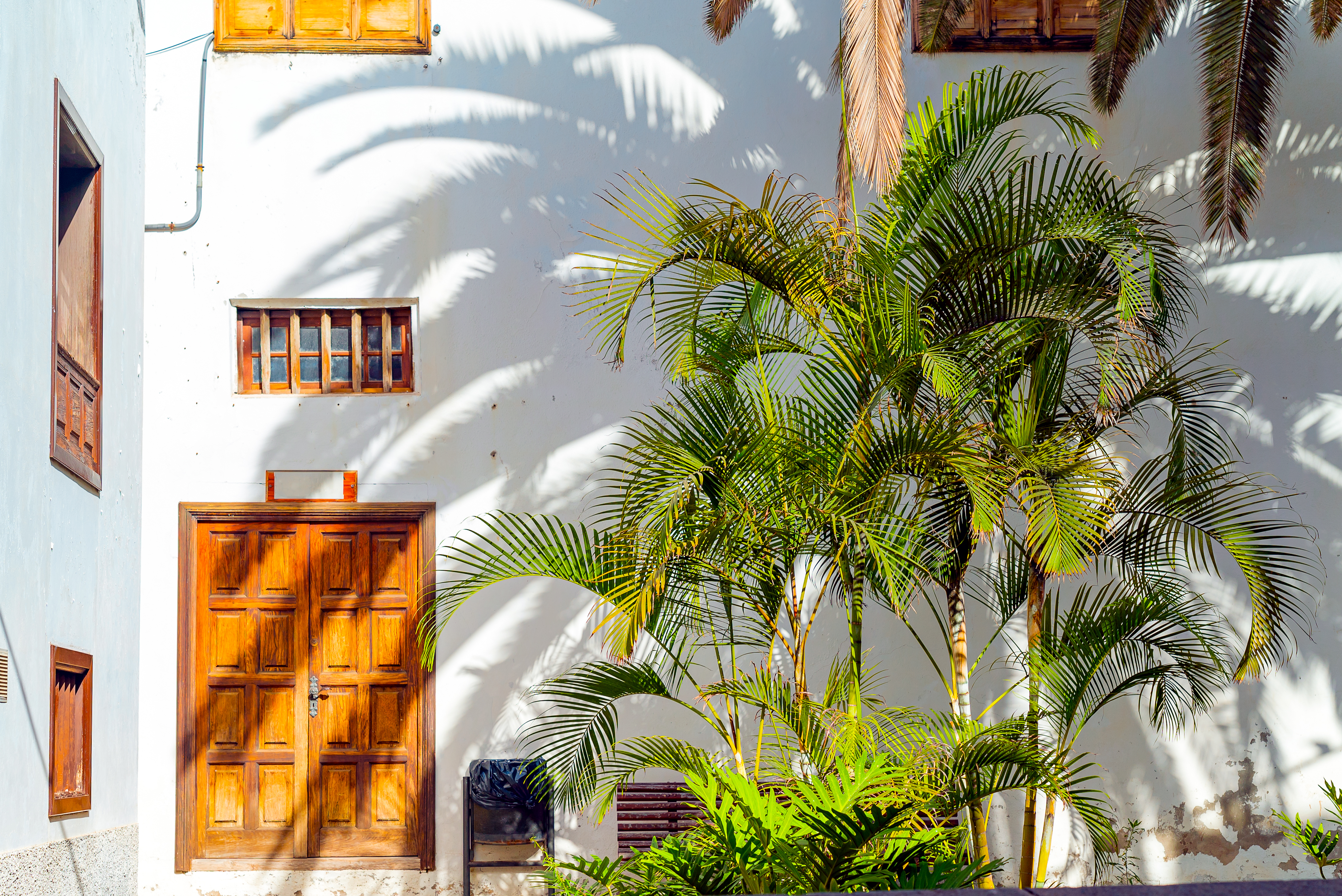An iconic silhouette against a fiery Spanish sunset, a powerful black shape punctuating the rolling hillsides—if you’ve ever taken a road trip through Spain, you’ve undoubtedly felt the impressive presence of the Toro de Osborne. These immense bull figures are more than just landmarks; they are a deeply ingrained symbol of the country itself, each one a silent guardian of the landscape with a fascinating story of branding, art, and national pride.
But what are these bulls, and how did they become as much a part of Spain as flamenco and tapas? Their journey from a simple roadside advertisement to a legally protected cultural icon is a uniquely Spanish tale.
From Brandy Ad to National Icon: The Origin Story
The story begins in 1956, when the Osborne Group, a renowned sherry and brandy producer from El Puerto de Santa María in Cádiz, commissioned an advertising agency to create a unique way to promote their "Veterano" brandy. The task fell to the talented artist and designer Manolo Prieto. His vision was bold: a simple yet powerful silhouette of a fighting bull, an image already deeply connected to Spanish culture.
The first bulls were made of wood and stood a mere 4 meters high. They began appearing alongside Spanish highways in 1957, proudly displaying the "Veterano" brand name. However, the wooden structures were no match for the elements. By 1961, they were replaced by the much larger, more robust versions we see today, constructed from 70 interlocking metal sheets and standing a colossal 14 meters (about 46 feet) tall.
The Bull's Fight for Survival: A National Treasure is Born
For decades, the Osborne bulls were a familiar and accepted part of the Spanish landscape. That all changed in 1988 when a new national law prohibited all roadside advertising to improve road safety. The order was clear: the bulls, now considered commercial hoardings, had to come down.
What happened next was extraordinary. An enormous public outcry erupted across the country. Communities, artists, politicians, and cultural figures rallied to "pardon" the bulls (indultar los toros). They argued that these silhouettes had transcended their commercial origins to become an intrinsic part of the Spanish landscape and identity—a symbol of strength, bravery, and the very soul of Spain.
The battle went all the way to the Spanish Supreme Court. In a landmark 1997 ruling, the court sided with the people. It declared that the Osborne bulls were no longer just advertisements but had acquired a cultural and artistic significance that was "integrated into the Spanish landscape." As part of the ruling, the branding had to be removed, leaving only the iconic black silhouette we see today. The bull had won its fight and was officially recognized as a national treasure.
The Anatomy of an Icon: Design and Dimensions
The sheer scale of the Toro de Osborne is a key part of its impact. Each bull is:
- 14 meters tall and 14 meters wide. (there are 7x7 variants also)
- Made from 70 metal sheets.
- Weighs approximately 4,000 kilograms (4 tonnes).
- Covers a surface area of about 150 square meters.
- Supported by four massive concrete foundation blocks.
This immense size ensures they are visible from miles away, creating a powerful and enduring image against the sky.
Where to Find the Bulls: A Different Kind of Spanish Road Trip
Today, there are 92 Osborne bulls dotted across the Spanish mainland and the Balearic Islands. Andalusia, the bull's birthplace, still has the highest concentration, but you can find them in nearly every autonomous community.
Spotting them has become a beloved road trip game for families and travelers. From the plains of La Mancha to the hills of the Basque Country, each bull's location gives it a unique character. There is even one famously overlooking the Jerez-Ángel Nieto motor-racing circuit, a nod to another Spanish passion.
The next time you are driving through Spain and see that unmistakable silhouette on a distant hilltop, you’ll know you’re looking at more than just a metal structure. You’re seeing a piece of history, a work of art, and a powerful symbol of a nation's fight to preserve a piece of its soul. It is the Toro de Osborne—a silent, stoic, and truly beloved icon of Spain.






